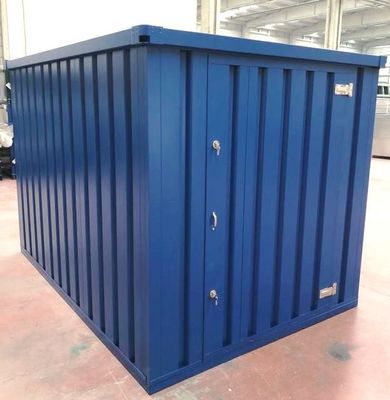Choosing the right type of shipping container can make or break the success of your project — whether it’s for storage, site offices, retail space, or temporary housing. Two common options dominate the market: traditional shipping containers and flat pack containers. Each has its strengths, and the best choice depends on your specific needs, budget, and logistics. Flat pack shipping containers for sale
Here’s a head-to-head comparison to help you decide which is right for you.

1. Transportation & Delivery
- Flat Pack Containers:
✅ Arrive disassembled in compact bundles
✅ Up to five flat packs can fit in the space of one traditional container
✅ Easier and cheaper to deliver to remote or tight-access sites - Traditional Containers:
❌ Require large trucks and lifting equipment
❌ More expensive to transport due to bulk size
✅ Better for one-time, high-volume shipping
Winner: Flat Pack — ideal if transport costs or access are an issue.
2. Assembly & Installation
- Flat Pack Containers:
✅ Can be assembled in hours with basic tools
✅ No crane or forklift needed
✅ Easily relocated or packed away after use - Traditional Containers:
❌ Heavy and require machinery for placement
✅ Ready to use immediately with no assembly
❌ More permanent once placed
Winner: Flat Pack — more flexible for temporary or mobile projects.
3. Customisation & Flexibility
- Flat Pack Containers:
✅ Modular design allows stacking and linking
✅ Easy to add windows, doors, and insulation
✅ Great for creating pop-ups, offices, or living spaces - Traditional Containers:
✅ Strong base for permanent structures
❌ Modifications are more expensive and labor-intensive
❌ Limited flexibility once on-site
Winner: Flat Pack — ideal for custom layouts and creative builds.
4. Space Efficiency & Storage
- Flat Pack Containers:
✅ Can be disassembled and stored flat
✅ Take up minimal space when not in use - Traditional Containers:
❌ Always occupy full volume
❌ Storage requires large areas and lifting gear
Winner: Flat Pack — better for seasonal or flexible-use projects.
5. Durability & Longevity
- Flat Pack Containers:
✅ Made from galvanised steel
✅ Weather-resistant, but generally lighter-duty than traditional models
❌ May not last as long under heavy industrial use - Traditional Containers:
✅ Designed for sea freight and tough environments
✅ Long-lasting and extremely durable
Winner: Traditional — better for heavy-duty or long-term industrial use.
Which One Should You Choose?
| Factor | Best Option |
|---|---|
| Remote or difficult sites | Flat Pack |
| Long-term durability | Traditional |
| Quick setup & mobility | Flat Pack |
| Heavy equipment storage | Traditional |
| Pop-ups or events | Flat Pack |
| Permanent structure base | Traditional |
Final Verdict
If your project demands mobility, customisation, and cost-effective logistics, flat pack containers are the clear winner. They’re ideal for businesses that need quick deployment, modular spaces, and easy storage.
However, if you’re after long-term durability, heavy-duty storage, or a solid foundation for a permanent structure, traditional containers might be the better fit. Flat pack shipping containers for sale
Still unsure? Consider your budget, intended use, and the location of your project — or better yet, consult a container specialist to guide you toward the right solution.